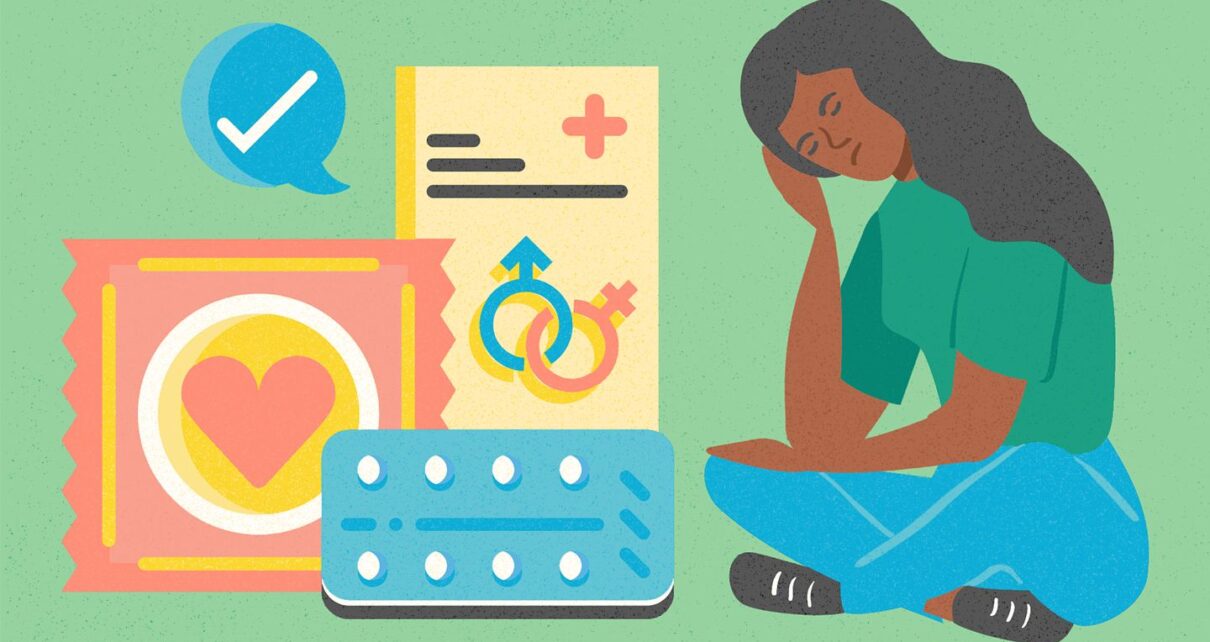Birth control comes in a variety of forms. The one that’s the ideal choice for you will depend on preferences, medical concerns, and costs. While birth control may be widely available, not having insurance can complicate matters.
Without insurance, finding affordable birth control may seem like a barrier to the medication and care you need. However, a lack of coverage doesn’t have to stop you from getting access to birth control. Several options exist for uninsured patients seeking contraceptives. Let’s discuss what you can do to get birth control without insurance.
1. Use Telehealth and Online Services
Various contraceptives, including the morning-after pill, are available through telehealth and online medical services. These services will prescribe online birth control to patients without insurance. The process begins with filling out digital forms and paying for a low-cost online medical consultation. After discussing your options with an online medical provider, you get a prescription for the contraception method of your choice.
After that, the service’s online pharmacy fills the prescription, and you get your medication in the mail. Similar to other mail-order pharmacy services, you’ll receive enough meds to last 90 days. Many refills are automatic, so you don’t have to worry about getting another prescription or going through another medical consult. However, you maintain control over your refill schedule and can cancel shipments when you need to.
While prices can vary according to different birth control methods, telehealth services usually disclose costs upfront. You’ll know what the initial and ongoing expenses are for contraceptives like the pill, the patch, or the shot. To help you make an informed decision, you can also see which birth control methods are available in your state.
2. Contact City or County Health Departments
In some areas, city and county health departments offer public healthcare services, including reproductive care. You can locate where facilities exist in your area through the Centers for Disease Control and Prevention. Since city and county health department facilities are largely funded by taxpayers, patients with or without insurance are welcome.
Costs for reproductive care like birth control are first determined by insurance and then income. Uninsured patients pay for care based on a sliding scale. You can get a prescription for regular birth control or get access to emergency contraception.
In most cases, you’ll meet with a medical professional to discuss your options. Many city or county health departments offer contraceptive methods beyond the pill. You can get IUDs, implants, or shots if you have trouble remembering to take birth control pills. Reproductive care and health counseling may also be available if you’re undecided.
3. Seek Out Nonprofit Family Planning Clinics
Nonprofit family planning clinics that receive Title X funding provide birth control to uninsured patients. Depending on your income, you can often gain access to contraceptives at an affordable price. While you might have to pay some out-of-pocket costs for healthcare, most nonprofits also offer financial assistance.
You can usually search for clinics near you by using online search tools or search phrases like “Title X clinics.” One thing to keep in mind is that Title X funds also go to city and county health departments. That means some cities may only have public healthcare facilities that offer low-cost birth control. Other areas may have a mix of public and nonprofit clinics that operate under Title X funding.
Nonprofit family clinics usually offer the same range of reproductive care that public facilities do. You can discuss your birth control options and get prescriptions for medications. Exams and procedures for other contraceptives like implants and IUDs might also be available.
4. Check Out Health Centers on College and University Campuses
College and university students can seek birth control through campus healthcare centers. Most of these clinics treat both insured and uninsured patients. You may have access to either prescription or over-the-counter forms of birth control through a college’s health center.
Not all universities and colleges have health clinics or offer medical services as a student benefit. You’ll need to check into the available services at your college or university. For students who have access to an on-campus health center, it’s also important to verify costs and operating hours. Depending on staff availability and university or college affiliation, birth control options may vary. That said, on-campus health centers can typically provide convenient access for uninsured students.
5. Visit Your Local Pharmacy
Not all methods of birth control require a prescription. Over-the-counter contraceptives like condoms and spermicide are available through local drugstores. You don’t need insurance or an appointment to purchase OTC birth control. However, some family planning clinics offer OTC options at no cost. You might want to check with any local centers first.
Some states also allow pharmacies to give patients prescriptions for contraceptives like the pill or the patch. You’ll usually have to go over your medical history and answer some questions before a pharmacist can prescribe birth control. Many pharmacies help patients reduce costs by offering prescription discounts and coupons. Most accept prescription drug savings cards, offer generic versions, or have chain-specific discounts.
Birth Control for Uninsured Patients
Without insurance, healthcare needs like birth control might seem unaffordable or out of reach. However, there are several ways you can get affordable access to contraceptives like the pill. Online health services, public health facilities, nonprofit organizations, college health centers, and pharmacies are some of them. Low-cost choices through these healthcare services make birth control accessible for patients regardless of their insurance status.

